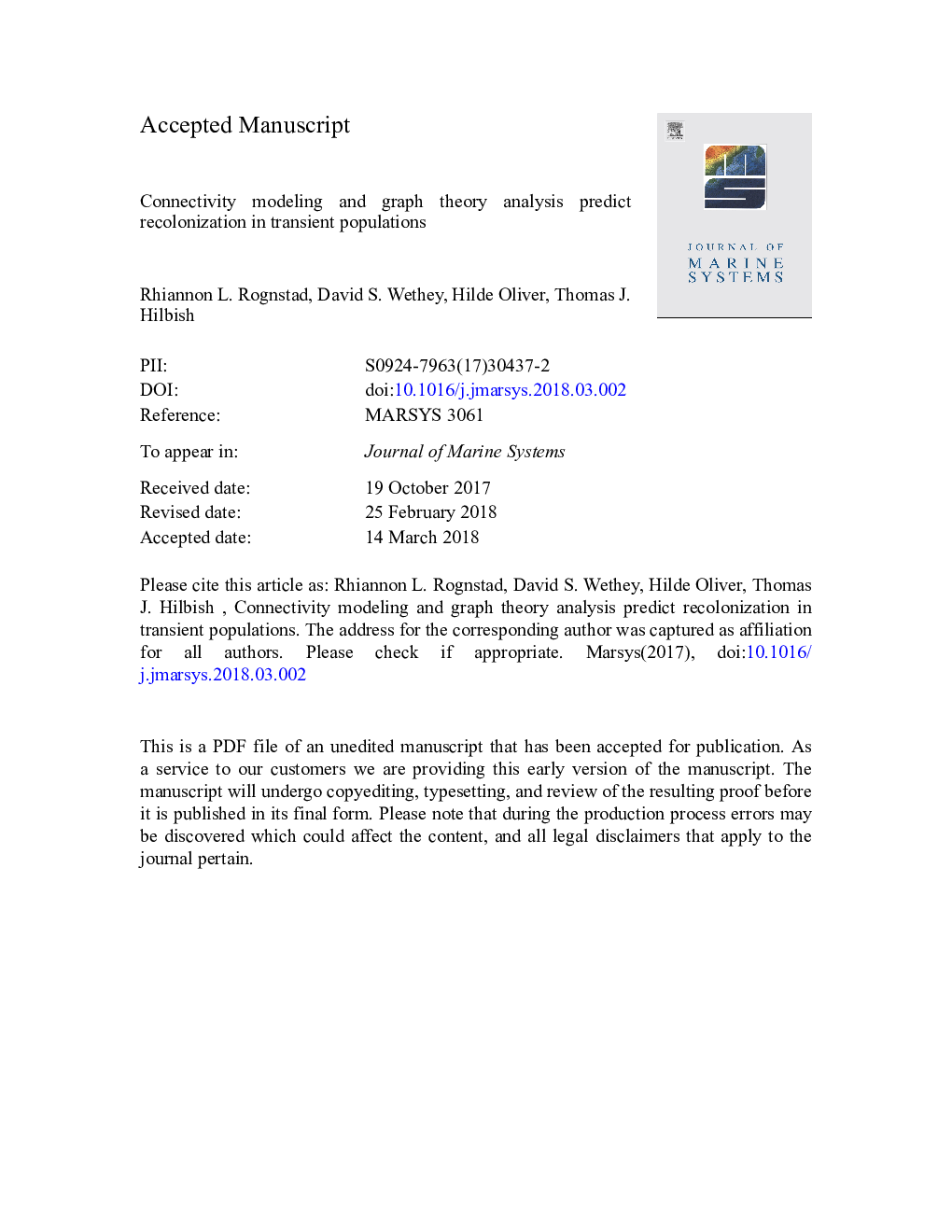| Article ID | Journal | Published Year | Pages | File Type |
|---|---|---|---|---|
| 8885934 | Journal of Marine Systems | 2018 | 29 Pages |
Abstract
Population connectivity plays a major role in the ecology and evolution of marine organisms. In these systems, connectivity of many species occurs primarily during a larval stage, when larvae are frequently too small and numerous to track directly. To indirectly estimate larval dispersal, ocean circulation models have emerged as a popular technique. Here we use regional ocean circulation models to estimate dispersal of the intertidal barnacle Semibalanus balanoides at its local distribution limit in Southwest England. We incorporate historical and recent repatriation events to provide support for our modeled dispersal estimates, which predict a recolonization rate similar to that observed in two recolonization events. Using graph theory techniques to describe the dispersal landscape, we identify likely physical barriers to dispersal in the region. Our results demonstrate the use of recolonization data to support dispersal models and how these models can be used to describe population connectivity.
Related Topics
Physical Sciences and Engineering
Earth and Planetary Sciences
Oceanography
Authors
Rhiannon L. Rognstad, David S. Wethey, Hilde Oliver, Thomas J. Hilbish,
